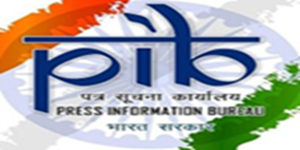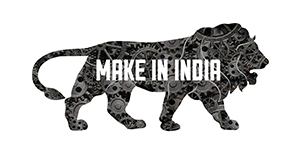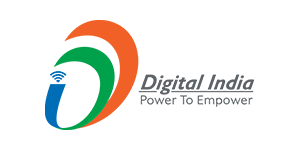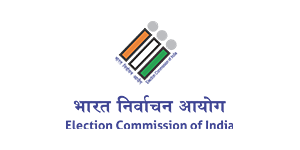The North East Centre for Technology Application and Reach (NECTAR) has developed the UAV system technology specially designed for mapping and surveillance applications. The acquired aerial imagery through the UAV system with 2cm ground pixel resolution, has been successfully validated for generation of quality mapping products as Orthophoto and Digital Surface Model with high precision accuracy.
Up to 10cm horizontal & 20cm vertical mapping accuracy has been achieved through these systems. Pilot project on Mapping of Brahmaputra Embankments, Mapping of Ganol River catchment (Meghalaya) & Mahanadi River catchment (Odisha) for feasibility survey & analysis of small and multipurpose dams have been accomplished.
NECTAR has covered more than 1400 km of linear stretch of highways in different parts of India through UAV imaging and processed the data into various high precision 3D mapping products for National Highways Authorities of India(NHAI). The benefits of drone mapping were useful for various activity of Highways viz planning, construction, monitoring quality and traffic congestion & toll management. Accurate feasibility study with respect to proper alignment preserving suitable geometry, economy of construction, land acquisition detail etc can be done through the above 3D mapping products. Similarly planning and Monitoring of Rural roads under PMGSY network can be done in combination of high resolution satellite and UAV data. NECTAR has accomplished such type of work for few blocks of Chhattisgarh, West Bengal and Jammu & Kashmir.
Technology Support for Agriculture Crop Analysis : NECTAR has provided services on feasible technology based agriculture crop analysis using satellite imagery and UAV acquired data for 50 Million hectares in different states of India under PMFBY. The crop acreage and Productivity estimation for wheat, paddy, groundnut, cotton, Bajra, Guar and Soyabean was done by the Centre. There were issues of crop loss due to poor rainfall / drought/ flooding and unreliable CCEs in few states i.e Tamilnadu, Maharashtra & Gujarat. The estimates provided by NECTAR were used by insurance companies and states as well to resolve the disputes /discrepancies in insurance claims.
The above technology can be used effectively to map crop pattern/yield estimation/ production for state government agriculture departments. It will assist state authorities to plan and manage agriculture monitoring activity for improvement of productivity.
National Highway Authority of India (NHAI), Ministry of Road Transport & Highways, GOI.
NECTAR has signed a Memorandum of Understanding (MoU) with National Highways Authority of India (NHAI) to provide specific benefits of UAV ultra high resolution aerial images in various stages of National Highway projects. NECTAR has covered more than 1400 km of linear stretch of highways in different parts of India through UAV imaging and processed the data into various high precision 3D mapping products. The benefits of drone mapping are useful for every activity of Highways viz planning, construction, monitoring quality and traffic congestion & toll management. Accurate feasibility study with respect to proper alignment preserving suitable geometry, economy of construction, land acquisition detail etc can be done through the above 3D mapping products. High Resolution Orthophoto & DEM generated from UAV data was generated which are very useful for the consultant engineers in most of the activities. The technology can provide significant amount of benefits in respect to save Time & Cost in planning and monitoring activities of National Highways.
In the areas of construction monitoring NECTAR has showcased by mapping 71 km of Eastern Peripheral Expressway for estimation of earthwork involved, measurement of width & length and monitoring different layers of pavement under construction stage etc provide a transparent & easy mechanism of monitoring the progress of highway projects. NECTAR has covered 60 % of its length for monitoring of expressway for its quality in regards to international standard for TOT awardees. The major highways covered so far is 100 km of Hyderabad-Vijaywada Expressway, 187 km of Kundapur-Goa highways along west coast, 241 km of National Highway No-8 in Gujarat-Rajasthan and 477 km of National Highway No-5 in Andhra Pradesh-Odisha along east coast.
NECTAR has taken up a major water resources planning project in Odisha. The project has been entrusted by the Ministry of Water Resources, Government of India. The scope of the project involved high precision 3D Mapping of approximately 450 sq km area to study the submergence area, number of villages to be inundated and to quantify the approximate volume of water capacity by the reservoir (RL91m) forming due to the proposed construction of Dam over Mahanadi River near Barmul Village in Odisha. The project had a feasible survey component of link canal of about 20 km length from the proposed dam to join Mahanadi-Rushikulya- Godavari link (M-G link) project.
The Mahanadi River was filled with water in the gorge area up to 19 km upstream from the axis of the proposed dam site. The water was not only infested with crocodiles but also the surrounding area was covered with thick forest living with wild animals. In spite of that NECTAR team has accomplished the survey work done. About 22682 high resolution aerial photographs with GSD 5 to 8cm were acquired from Drones flying over the catchment & link canal area. About 140 numbers of High precision Ground Control Points (GCPs) were surveyed over the area using satellite based differential GPS technique. To estimate the accurate water capacity of the catchment, river bed profile data was collected using laser based Echo sounding technology/instrument. The data sets (High resolution image, GCPs & river bed profile) were processed into high definition Surface Models for both the catchment area and 20 km link canal area with 22cm vertical accuracy. The surface model of catchment area was analysed for the water capacity / volume & extent of submergence of reservoirs to be formed at different dam height levels and surface model of the link canal area was analysed for the correct alignment for smooth flow mechanism of water from dam site to the M-G main canal. The number of affected villages due to the submergence level and their size (Major/Minor) were listed for selection of dam height feasibility analysis
A case study was taken up to showcase the potential of low cost micro-UAV mapping applications for possible tsunami emergence response and enforcement of laws to control growth of structural developmental work along coastal vulnerable areas. The 500 sq.km area was taken up on the East coast of Southern India for case study. The objective of the study was to carry out a microscopic estimate in both, qualitative and quantitative, analysis using quality information viz. accurate height of each building of the residential/commercial facility, engineering structure type like concrete or mud house or poorly constructed etc, and exact property boundary, with all associated demographic information. The demonstrated project was accomplished by acquiring aerial images with the help of in-house developed micro-UAV, having on-board a 24 MP consumer camera (Sony ILCE 6000), flown at 150m above ground level which has provided images of 5 cm Ground Sampling Distance (GSD). About 2, 00,000 images were captured by the UAV & processed through photogrammetry software using High end GPU enabled computer system. A high resolution Surface Model and Orthophotos were obtained with 10 cm of horizontal accuracy & 15 cm of vertical accuracy. Then a 3D Terrain Model was created using the high resolution Surface Model & accurate Orthophotos for microscopic 3D dimensional visualization, simulation & analysis. By using this model one can visualize the extent of flooding, type of buildings & structures, quantum of population likely to be affected at various levels of Tsunami waves.
ITC for its paper board industry, has developed a farm plantation programme, with buy-back guarantee, which provides employment and income to farmers, and uses high-yielding, site specific, disease-resistant clones and a comprehensive package of plantation and management practices to ensure constant supplies of high-quality raw material to their manufacturing facilities. Eucalyptus trees are grown both by small farmers for profit and subsistence and by large conglomerates for industrial wood supply. ITC Paper Board was interested to develop an affordable technology to map the Eucalyptus Plantation areas along with average height of the trees & number of trees in the plantation in order to get quick launch of efficient procurement planning. NECTAR has extended its technology venture on Biomass estimation of Eucalyptus trees over a large areas of plantations. In this connection a pilot study in 500 sq km of area pertaining to Jangareddigudem & Koyalagudem mandals in West Godavari districts of Andhra Pradesh has been taken up for Biomass estimation. The Centre has acquired high resolution imagery through UAV and processed those into a high accurate 3D point cloud models. From point clouds, accurate counting of trees along with its height has been computed through an automated process in very less time. Using the number of trees, respective height and available girth, accurate biomass has been estimated using a mathematical model. The main benefit of the technology has been realised as the accurate estimation of biomass for the paper industries and allied commercial facilities over that region which would increase the industrial activity and economic growth of the farmers associated with the industry.
A R&D Project on Jharkhand Rural Water Supply Development plan was initiated by CIPT under the guidance of research staffs of Columbia Water Centre , New Work. It was planned to help Jharkhand DWSD to develop analytical strategies for reliable, low cost drinking water and ancillary energy and water services. For this project, NECTAR was mandated to develop high resolution topography and habitation information using UAV data collected over a small pilot area selected in the outskirts of Ranchi City was done. The data was useful for planning flow paths, catchment delineation, pump lift requirements and feasible system layouts etc. which was done through GIS analysis by NECTAR.
A Remotely Piloted Aerial System (RPAS) mounted with a sensor (indigenously developed by the Centre) was allowed to fly over the area and acquired overlapped image data. A detailed surface model & orthophoto with spatial resolution of 10 cm were obtained. About 15cm horizontal and 20 cm vertical accuracy was resulted in the orthophoto and elevation model respectively so generated. Then a virtual 3D Terrain Model of the area was generated using specific software and various 3D analyses were done for ground execution of the creation of the facilities. The first analysis was done in respect of identification of possible mine quarries and check dam locations, with 50 cm Contour Interval map of the area. Then, based on suitable height of the water level inside the facility, volume of water was quantified. The second analysis was done for calculation of length of pipe lines based on the best path suitable for the flow of water under the gravity towards the nearby habitation. The water consumption target of each house hold habituated nearby under water scarcity was surveyed and accounted. Then the complete model in each location was tested for feasibility for implementation based on water resources accumulated and the targeted. The availability of water over the catchment was assessed by rainfall runoff modelling using 10 year data. Jharkhand state Government and the Centre are working on the positive outcome of the case study and are planning to implement in the state in large scale.
Satellite and ground based remote sensing data have been used extensively for crop assessment and yield estimation. In absence of real-time high resolution satellite data, Airborne (UAV) imagery is an effective tool for crop assessment. Airborne multispectral imaging systems provide image data at fine spatial resolutions and also have the real-time monitoring capability. Indices derived from UAV based imageries can be correlated with crop parameters (LAI, biomass and yield) and also can be used for crop classification at field level and damage assessment.
NECTAR has been entrusted to provide service for acquisition of image data over designated crop area through UAV and processing those image data for orthomasaic data under the pilot study, called KISAN, (C[K]rop Insurance using Space Technology And geoiNformatices). The high resolution data would be used for better assessment of crop yield and crop loss. The objective of this study is to evaluate the use of technologies identified in Pradhan Mantri Fasal Bima Yojana (PMFBY).
पृष्ठ आखरी अपडेट : 26-02-2025 - 15:32

















